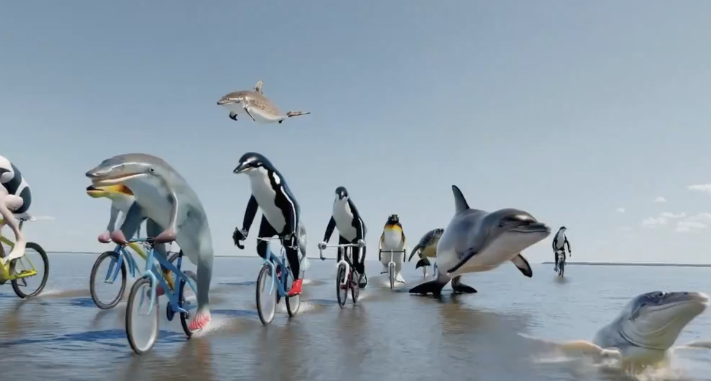The recent announcement of OpenAI’s Sora text-to-video AI tool has sparked a range of reactions in the academic community, ranging from anxiety to excitement. This breakthrough, which was only released last month, has already proved its ability to generate photorealistic films from short text inputs, displaying scenarios such as a stroll down a neon-bathed street in Tokyo or a joyous dog leaping between window sills. The dynamic response from specialists reveals a rising concern about the possible misuse of such technology, as well as a desire to investigate its numerous possibilities.
Tracy Harwood, a digital culture expert at De Montfort University in Leicester, UK, is astounded by the quick progress of text-to-video AI. Just a year ago, the idea of AI creating videos seemed absurd, exemplified by a viral video of actor Will Smith consuming pasta. Today, however, there is perceptible concern among researchers about the societal implications of this technology, particularly in terms of global politics.
Why the impact of OpenAI’s groundbreaking text-to-video tool Sora will be huge:
OpenAI’s choice to release Sora with a caveat, providing it to “red teamers” for risk assessment, demonstrates the company’s concern about the potential damages involved with its construction. Red teaming, a simulated attack strategy, seeks to assess how technology responds to malicious actions such as spreading misinformation or hate speech—a critical step in safeguarding against misuse.
While Sora represents a big milestone, it is not the only rival in the text-to-video space. Other players, such as Gen-2 by Runway in New York City and Google’s Lumiere, have also made progress in this area. However, Harwood expresses disillusionment with these products, describing them as increasingly formulaic and relying on narrowly defined cues to generate intriguing content.
The emergence of convincing but false content poses a serious problem, particularly in light of the forthcoming elections. Dominic Lees, a researcher in generative AI and filmmaking at the University of Reading, is concerned about the flood of bogus videos and audio clips that could impact public opinion. The spread of false audio showing UK Labour Party leader Keir Starmer and alleged words from US President Joe Biden highlight the importance of tackling this issue.
Watermarks have been proposed as a countermeasure, although Lees is sceptical of their effectiveness. He claims that present watermarking systems are prone to erasure, putting the onus on viewers to determine authenticity—a process he considers unachievable on a worldwide scale.
Despite these concerns, there are possible benefits. Harwood advocates using text-to-video AI to convert difficult knowledge into more palatable formats, bridging the gap between academia and the general public. Furthermore, applications in healthcare, where AI could operate as an interactive informational resource for patients, provide glimpses into a future in which technology augments human interactions.
Furthermore, text-to-video. AI has the potential to streamline data analysis procedures, particularly in disciplines such as particle physics research at CERN. AI can speed up scientific research by automating routine processes and aiding predictive modelling, allowing researchers to extract insights from massive datasets.
However, the creative landscape is ready for disruption. Tom Hanks’ comments about AI enabling postmortem film appearances highlight the existential quandaries that actors and artists face in an AI-powered profession. Lees considers the ramifications for budding artists, questioning whether the prevalence of renowned names may hinder opportunities for new voices.
Finally, the introduction of text-to-video AI signals a paradigm shift in content production and consumption. Harwood underlines the importance of society developing critical evaluation abilities as it navigates this ever-changing media ecosystem. As new tools make content creation more accessible, they also require a rethinking of old patterns of consumption—a revolution with far-reaching ramifications for the future of communication and creativity.











Leave a Reply